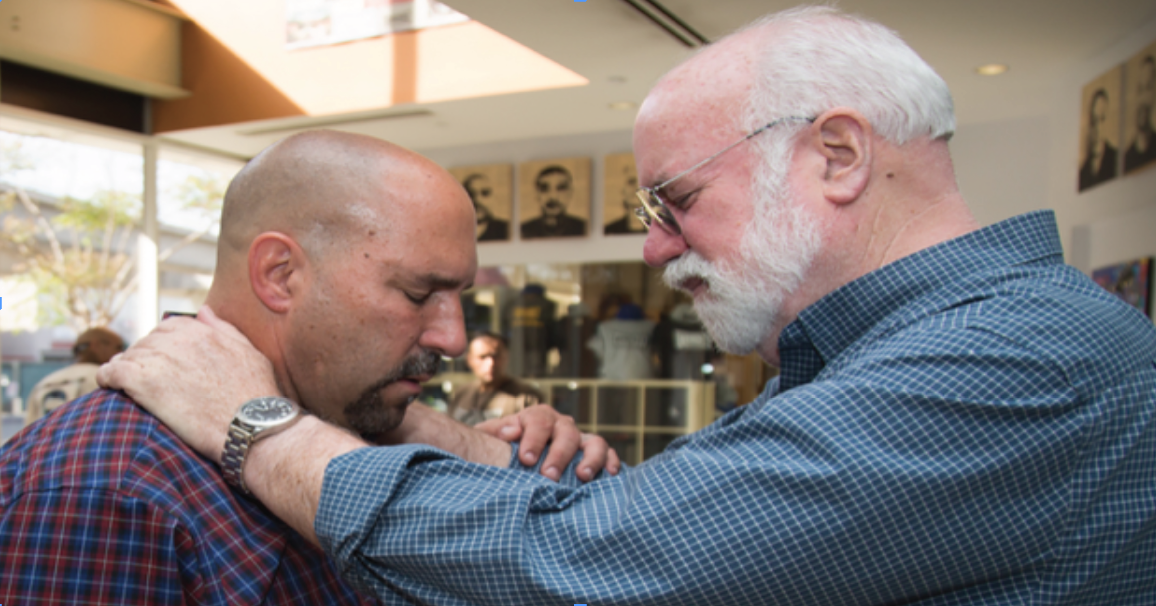
Bill Carangelo
Staff Writer
Tonight at 7 p.m., ESU will be hosting Father Gregory Boyle of Homeboy Industries for the Sixth Annual Peter Roche de Coppens Spirituality Lecture.
Father Boyle’s presentation, titled Barking to the Choir: Power of Radical Kinship, will be held in the Abeloff Auditorium and emphasizes the impact of Homeboy Industries and its effect on the community.
Father Boyle is the founder of Homeboy Industries. Established in 1988, it is the largest gang intervention, rehabilitation and re-entry program in the world. Homeboy Industries was launched in Los Angeles, Calif., during a time where gang violence and strife was constant.
The LA Times highlighted this fact in 1993, noticing the consistent rise in violence and homicide.
“By 1980, which for most of the decade stood as the county’s most violent year, the homicide rate was 24.4 killings per 100,000 residents,” said L.A. Times Staff Writer Shawn Hubler. egan to surge as the 1990s came around, where homicide rates continued to rise until reaching its deadliest year in 1992.
Father Boyle recognized what he thought of as the root of this problem; thus, creating the impetus behind launching Homeboy Industries.
The vision behind Homeboy Industries is simple. They want to provide those with previous gang affiliation, or formerly imprisoned individuals, with a way to restart his or her second chance at life.
According to Homeboy Industries, they believe that healing occurs in a culture of intimacy and tenderness toward one another.
“In order to create this culture, we provide a safe haven for people to discover and inhabit their authentic selves and become whole,” said the Homeboy Industries website.
Homeboy Industries follows a four-step process in the rehabilitation of its members. These steps include reception, relationship, re-identification and transformation. Each step serves as an essential stepping-stone for the former gang members or former incarcerated peoples that come to Homeboy Industries looking for help.
Reception focuses on identifying the newcoming trainee on a personal and human level. The need for food or housing is secure by Homeboy Industries, and in turn, the trainees are placed through short workweeks.
Relationship begins to work on the psychological experience of the new trainees. During this step, trainees gain access to multiple forms of therapy and become involved with the community at Homeboy Industries.
Re-identification begins to move the trainee through personalized classroom, and on-the-job instruction that emphasizes an employment plan following the four-step process.
Transformation is the accumulation of all the hard work that the trainees have contributed to reach this point. Upon reaching this step, Homeboy Industries will proactively search for internships and interviews for their trainees: A true testament to show how much they care about their community.
Father Boyle, against the preconceived notions of law enforcement at the time, recognized an alternative form of ending gang violence. What he understood was simple: people are people.
According to the Accounting Standards for Private Enterprises (ASPE), there are about seven million people affiliated with prison, whether in jail or on parole, within the United States. Two-thirds of these seven million people will be rearrested within three years, according to the U.S. Department of Health & Human Services.
In other words, nearly 4.7 million people are likely to be rearrested.
Father Boyle and Homeboy Industries identified the wrong in the cycle of incarceration, and chose to take the initiative in solving it by starting at the human level.
Email Bill at:
Wcarangel1@live.esu.edu

